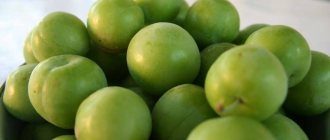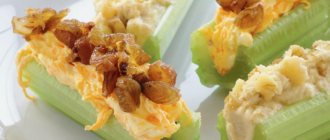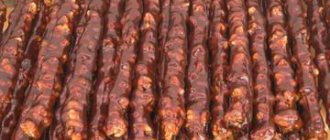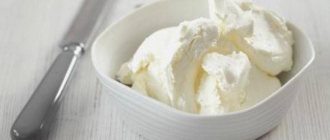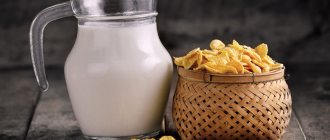Goji berries, green coffee, quinoa seeds and other exotic products are inferior in benefits to the beautiful northern berry of an unusual color, pleasant taste with a slight sourness. We are talking about blueberry, gonobobel, drunkard - a swamp berry that retains its properties in any form. It is tasty, healthy, indicated for adults and children, and allowed during pregnancy. Let's talk about the beneficial properties of the berry and the rules for its use.
The blueberry has another interesting name - gonobobel. Blueberries are often mistaken for blueberries. Despite the external similarity, the fruits are different: gonobobel is larger and has slightly greenish flesh that does not stain the mouth. You can safely eat handfuls of healthy berries, not be afraid to walk around with blue lips and tongue, and enjoy the pleasant sweet and sour fresh taste.
Blueberries have unique beneficial properties. Gonobobel has many healing qualities, and it is widely used both in cooking and in folk herbal medicine in fresh, dry, and frozen forms. Wine is often made from blueberries and useful extracts are obtained. Blueberry extracts are then added to creams and medications.
What blueberries look like
Blueberry is a small shrub whose height rarely exceeds one to one and a half meters. In early June, small berries with a dense skin of a rich blue color with a slight iridescence ripen on the bush. Blueberries are harvested all summer long – the bushes bear fruit until August, so it’s easy to stock up on these delicious, medicinal fruits all summer long.
The common blueberry looks picturesque, representing a bush with fluffy leaves. The branches of the bush are curved, long, and during the flowering period they are literally strewn with beautiful white or pink flowers that resemble miniature bells. The flowers fall, and then the fruits set. The color of blueberries is blue, covered with a white coating, somewhat similar in appearance to snow. As soon as the berries ripen, they turn into a real treat - vitamin bombs. Blueberries inside are filled with vitamins and microelements valuable for health. It is curious that shrubs live for a very long time. The lifespan of each sometimes reaches 100 years.
Where do blueberries grow?
The common blueberry belongs to the heather family, and its closest relative is the healthy lingonberry. Like lingonberries, gonobobel loves to grow in marshy areas, peat bogs, and tundra. The fruit's favorite climate is cool, which is why it is often called the northern berry. Blueberries are highly valued by residents of Canada, North America, England, Iceland, and even Japan. There, the healthy berry grows in the East and is revered by the residents as a natural healer for many diseases.
In addition to gonobobel, blueberry has other names: drunkard, water drunkard, fool, doveberry and drunken berry. It is believed that if you overeat berries, you can easily fall into a dope like intoxication.
Biologists have found out that it is not the blueberry itself that is intoxicating, but the wild rosemary. It often grows near bushes, its esters end up in the spores of the dove, which gives the berries mild intoxicating properties.
Health Benefits of Blueberries
Since ancient times, healers and herbalists have known the benefits of blueberries and use the berry to improve health. Firstly, the berry is able to compensate for the deficiency of ascorbic acid in winter and spring, when there is a catastrophic lack of fresh vitamins. Secondly, she is considered a fighter against obesity. Since it contains nicotinic acid and thiamine, constant consumption of healthy berries helps to lose weight or at least stabilize it, preventing it from rising.
Finally, the juice was always given for acute febrile conditions and as an ambulance for stomach pain. The mild “intoxicating” effects of blueberries quickly relieve spasms of the gastrointestinal tract and have a calming effect on humans.

Beneficial properties of blueberries for women
Gonobobel was always recommended to eat while expecting a baby. All thanks to microelements that have a complex beneficial effect on the body of a pregnant woman.
Gonobobel contains folic acid. Blueberries are recommended for pregnant women in the early stages, even in the planning stage of pregnancy, the substance helps the formation of new cells. The fetus develops better, internal organs are formed according to all standards, and a strong and healthy baby is born. Another property of blueberries is their ability to regulate blood pressure. This serves as an excellent prevention of gestosis - a direct threat of premature birth in the third trimester of pregnancy.
Vitamin C protects the expectant mother and fetus from colds, harmful bacteria and viruses. Gonobobel berries are indicated for toxicosis. They stop the urge to vomit, and the pregnant woman does not feel strange tastes.
Blueberries during breastfeeding
Blueberries contain rutin and exculin, which are beneficial for heart and vascular diseases. Plus, this healthy berry always improves brain function, cleanses the blood, relieves swelling and regenerates the retina. All these qualities deservedly made the berry useful even during breastfeeding. With mother's milk, microdoses of beneficial components reach the baby, strengthening the little body.
Gonobobel berry allows you to avoid such a phenomenon as postpartum depression, when young mothers feel empty and lost. The berry stimulates the production of the hormone of joy - serotonin, so that women endure the first months after the birth of a child much more pleasantly: they feel cheerful, cheerful, and get better sleep. Of course, all these benefits are real only if two main conditions are met: moderation and careful use.
Benefits for weight loss
One of the glorified properties of blueberries is their low calorie content; 100 g of fresh product contains only about 40 kcal. Thanks to this nuance, blueberries can be safely included in the diet menu without fear of gaining excess weight.
The berry is known for its fat-burning properties due to its polyphenol content. These substances promote the breakdown of fats already present in the body and prevent the formation of new fat depots.
So, at least, some scientists say. The fact is that blueberries are useful for weight loss; they can diversify your diet and significantly reduce its calorie content. Blueberries, when consumed regularly, help combat constipation, being a powerful stimulator of intestinal motility. Thanks to its astringent effect, it helps eliminate toxins in the human body.
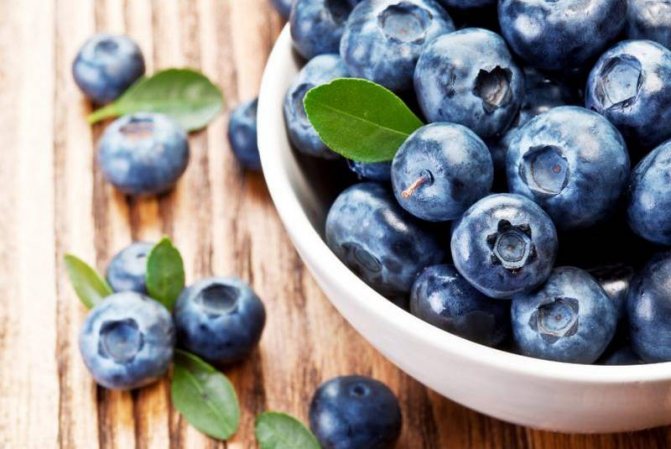
blueberry leaves
Wild blueberries are famous not only for their healthy berries. The leaves are also very often included in herbal teas for their unique composition. Dried and fresh leaves contain tannins and steroids that can fight several ailments at once.
How the leaves help:
- strengthen the walls of blood vessels, making them elastic;
- stop heavy bleeding, for example, during a woman’s menstrual period.
- regulate blood pressure, so hypertensive patients are advised to drink teas as part of complex therapy for the disease;
- normalize blood sugar, indicated for diabetics against insulin surges;
- relieve inflammation during gastritis, saving from acute pain in the stomach:
- gently and delicately improve digestion during constipation;
- relieve joint pain;
- help relieve symptoms of arthrosis.
Brewed teas from leaves and berries are very good for those who have recently suffered from a cold and want to quickly restore strength. Since the leaves contain a lot of vitamin C, they restore energy and strengthen the immune system no worse than many expensive medicines.
It is with a decoction of the leaves of the dove that they recommend rinsing your hair: it becomes clean, strong, shiny and manageable.
How many calories are in blueberries?
Here's how much:
The calorie content of fresh blueberries per 100 grams is 35 kcal.
Proteins, fats and carbohydrates (BJU) of fresh blueberries in gr. per 100 grams:
Proteins - 1.0
Fats – 0.0
Carbohydrates – 8.2
How is this berry useful? Great video!
And further:
This wild berry is a real treasure for women, as its high antioxidant content makes it top of the list of anti-aging foods. Blueberries and blueberries contain a lot of anthocyanins - powerful antioxidants that help fight premature aging and the appearance of wrinkles. Another plus: one glass of this delicious berry contains only 80 kilocalories, so you can snack on it and satisfy your sweet cravings without feeling guilty.
How and when is the best time to eat berries?
Wild blueberries are delicious in any form: frozen or fresh. The berries are delicious in fruit drinks, compotes, and honey. The berry acquires an unusual taste in jams, which are tender and not cloying. Blueberry jelly has a pleasant berry color; it gently envelops the stomach, quickly relieving any irritation of the mucous membrane.
Top 5 best recipes
- Decoction of leaves. Dry leaves are poured with a glass of warm water, boiled for 5 minutes, and then infused. Drink 5-7 times 50 ml before meals.
- Grated berries. The blueberries are covered with a small amount of sugar or honey and ground. Eat fresh with tea 2-3 times a day. Recommended amount 1-2 tbsp.
- Blueberry compote. The berries are covered with sugar, filled with clean water and heated. As soon as the water is covered with small bubbles, it is turned off and the drink is allowed to brew. You can drink chilled 2-4 glasses a day at any time of the day.
- Blueberry and cottage cheese smoothie. The berries are mixed with 0% fat cottage cheese or natural yogurt and blended in a blender. Eat instead of dinner 2-3 hours before bedtime.
- Blueberry jelly. The berries are rubbed with a sweetener and the juice is allowed to stand out. Strain the juice through cheesecloth or a sieve. Dissolve gelatin, according to the instructions on the package, in the required amount of water, mix with juice. Pour the resulting mixture into bowls and cool in the refrigerator. Serve with whipped cream for dessert after a hearty dinner. Dessert is recommended for everyone who suffers from obesity and diabetes.
Wild blueberries in some countries are loved by raw foodists and are used together with shoots for salads and teas: they are crushed, dried, and then drinks are brewed from them. These healthy and tasty berries are recognized as a powerful medicine against problems with the heart and blood vessels.
Application
Blueberries are harvested for raw consumption, actively frozen and processed. It is used to make jam, jelly, compote, jelly, jam, juice, and wine. Berries are added to desserts, fruit salads and dairy products.
Market Analytics
- COVID-19 is changing the rules of the game in the cosmetics market
- Beauty of the future: cosmetic innovations 2020
- New ingredients are the driving force of the cosmetics industry
Convenient search for beauty salons on our website
Beauty salons in Moscow Beauty salons in St. Petersburg Beauty salons in Ekaterinburg Beauty salons in Novosibirsk
Latest blog posts on our website
- Naturecream / Geranium (Pelargonium) oil for skin health and beauty
- Prostye-sovety / Save on a beauty salon: procedures that can be done at home
- Naturecream / Growth Factor - brings back youth?
- Oksana-Lezina / 3 effective abdominal exercises from a fitness instructor for beginners
- Prostye-sovety / Making perfect curls at home
- Prostye-sovety / Which hair removal method to choose
- Naturecream / Wrinkles Puppets
- Naturecream / PEPHA-TIGHT - instant skin lifting
- Naturecream / Blue light - a danger to the skin
- Naturecream / Cocoa Butter – A treat for the skin
Latest forum topics on our website
- Mrs._Smith / Badly sunburned! What to do?((
- Ice / Is it necessary to combine fitness classes with a diet?
- Antonova / What can be used for hair loss?
- Radio operatorKat / Who was on a protein diet?
- Suzanna / Mesotherapy on the face
Other articles in this section
| Blackberry Blackberry is the closest relative of the raspberry and belongs to the Rosaceae family. Blackberry bushes are the most common in nature; they are rarely grown in gardens. The plant blooms in early summer and blooms until autumn, so one bush simultaneously contains flowers, unripe fruits and ripe berries. Blackberries are multi-seeded berries of purple-black color, juicy, sweet and sour with a wonderful aroma. Blackberries are a very productive plant, and at the height of the summer season, its branches bend under the weight of ripe berries. |
| Schisandra chinensis Schisandra chinensis is a perennial climbing vine that twines around tree trunks and reaches 15 m in height. The fruits of the plant are bright red round berries collected in a cluster, which ripen in September. They have a specific taste: spicy, bitter or sour, sometimes hot. The berries and leaves have a pronounced lemon aroma. Schisandra chinensis is a valuable medicinal plant; all its parts are used in folk medicine: fruits, leaves, bark and seeds. |
| Rowan Rowan looks like a small tree and belongs to the Rosaceae family. Rowan is a medicinal plant; its fruits, leaves and flowers are used in folk medicine. Widely distributed throughout almost the entire temperate climate zone. Small round fruits are collected in clusters. The red-orange berries have juicy pulp with pronounced bitterness and small seeds. |
| Grapes Grapes are a climbing woody vine that has a powerful root system and consists of long perennial shoots. It is attached to the support with antennae. Grapes are considered one of the first plants that people began to consciously grow and thanks to which they began to lead a sedentary lifestyle. The fruit of the grape is a round or oblong berry with juicy, refreshing pulp and may contain small hard seeds. Depending on the variety, grape berries differ in shape, color, size and taste, which can vary from sour to sickly sweet. The color of the fruit comes in various shades of yellow, green, pink, burgundy, blue, purple, and black. The berries are collected in loose or dense clusters, which have different shapes and weights. |
| Rosehip Rosehip is a widespread, unpretentious thorny shrub of the rose family, about 1.5 m in height with branches covered with strong thorns; its cultivated form is known as Rose. Rosehip flowers are pink or white-pink, with five large free petals. The small berry-like fruits are red-orange in color, oval in shape and contain many hairy achenes. The fruits ripen during the fall and are collected before frost, since even slight sub-zero temperatures destroy the medicinal properties. |
| Apricot Apricot fruits have tender and juicy pulp, pleasant to the taste, perfectly quench thirst and hunger, and enrich the body with vitamins and microelements. The famous ancient scientist and healer Ibn Sina believed that apricots should definitely be in the diet of every woman, because eating these fruits gives the skin freshness and elasticity, strengthens hair and nails, and helps fight excess weight. |
| Juniper Juniper is a coniferous evergreen shrub, which is a relict medicinal plant, grows up to 8-10 m in height and resembles a small cypress in appearance. Juniper is a long-lived plant and lives from 600 to 3000 years. The leaves of the plant look like needle-like, prickly needles. Juniper fruits are blue-black juicy and aromatic cones. They are very sweet, with a spicy resinous flavor and a pronounced pine smell. Juniper berries grow for 2 years and fully ripen by the autumn of the second year: the fruits become soft, acquire a black-blue color with a bluish waxy coating. Usually there are ripe and green buds on one plant. |
| Mango Delicious in taste, mangoes grow quite large in size. The fruits are oval in shape, smooth and thin skin of yellow or reddish-green color. The large and hard seed is surrounded by aromatic and juicy yellow flesh, which, depending on the variety, can be soft or fibrous. |
| Plum Plums have small round or oblong fruits with dense, fleshy, sweet and sour pulp and a hard, inedible pit. The color and chemical composition of the fruit depends on the variety; plums are yellow, green, red, blue and purple. At the same time, yellow fruits contain more vitamin C and vitamin E, and dark varieties contain anticyanins. Thanks to the work of breeders, there are many different varieties of plums; the following varieties are common in central Russia: sloe, domestic plum, Ussuri plum, damson plum and Chinese-American hybrids. |
| Mangosteen Mangosteen (mangosteen, mangosteen) is not related to mango, but has an equally delicious taste. Large round fruits are covered with a thick (up to 1 cm) dark purple peel, under which there is juicy white pulp with seeds consisting of segments. The value and uniqueness of these fruits lies in the xanthones they contain. Despite the fact that mangosteen peel is not eaten fresh, it is used in making juice, and the burgundy pigment is used as a natural dye. |
Contraindications and harm of blueberries
Marsh blueberry has a minimum of contraindications and is indicated for people from 3 to 80 years of age or older. People with blood diseases, benign and malignant neoplasms during pregnancy and lactation should consume this healthy berry with caution. Despite the permission of obstetricians and gynecologists, it is better to consult with them and use them in the dosage indicated by them. Since gonobobel reduces blood pressure, it can cause a sharp decrease in strength in hypotensive patients.
If you have a great love for the healthy blueberry, you should enjoy it a little at a time - no more than one glass of berries per day. It is better for people with greater weight to refrain from desserts with berries containing white sugar, replacing it with sweeteners or honey in small quantities. However, the main commandment of any herbal medicine is moderation, caution, wisdom and consumption of the berries during the season when the beneficial properties of blueberries are manifested in maximum concentration.
Enjoy the beautiful, healthy blue berry: gonobobel, durnik, drunkard, treat yourself with natural healthy vitamins and delicious food and be healthy.
Restrictions and contraindications
Beneficial bluish-blue berries can cause harm in certain diseases. Contraindications for the product include:
- stomach ulcer and pancreatitis in acute stages;
- gastritis with high acidity in a state of exacerbation;
- tendency to gas and bloating;
- individual allergy to berries;
- lactation - you should not eat blueberries while breastfeeding, it can harm the baby.
It is also recommended to follow small daily dosages of berries - if you eat too many tasty berries, it will lead to diarrhea. Fresh berries are not recommended for consumption with coffee and strong black tea, since the benefits and harms of blueberries in this case become ambiguous, and the combination can cause nausea.
